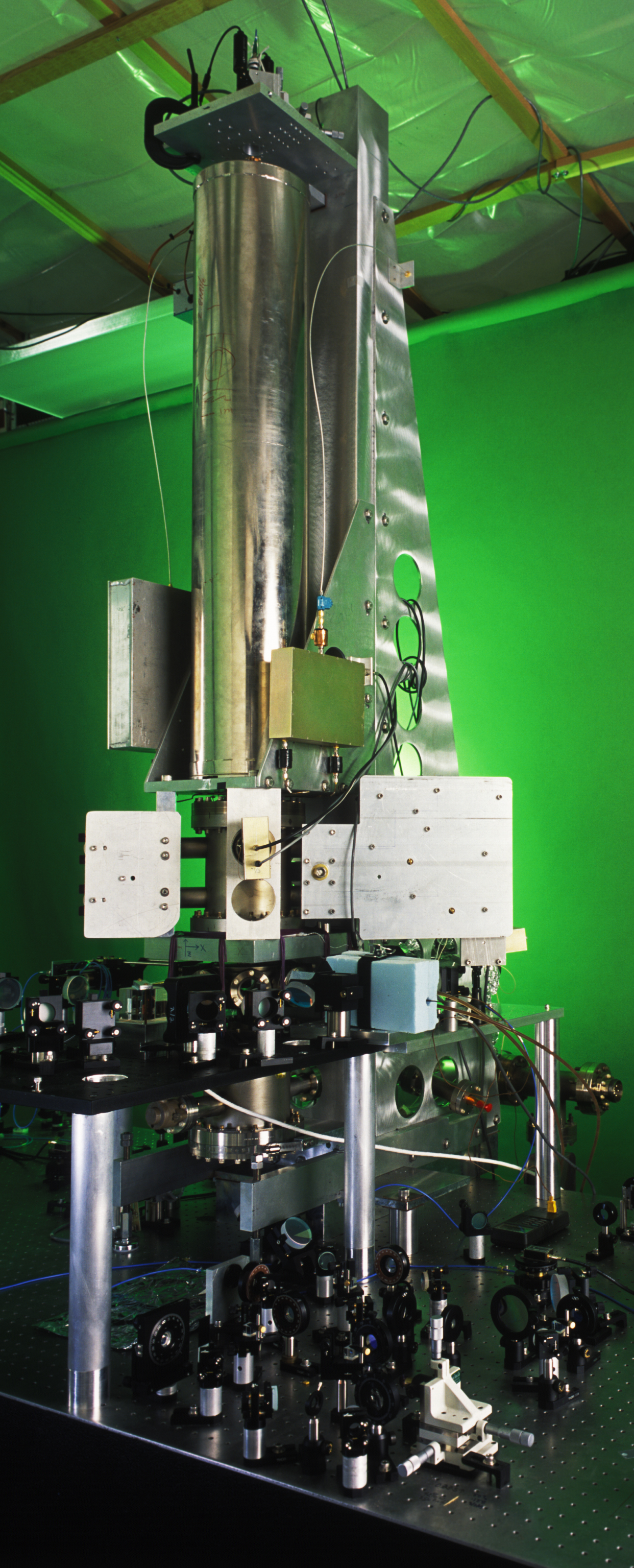SI Units: TimeThe second is the duration of 9 192 631 770 cycles of the radiation associated with a specific transition of the cesium 133 atom. The second is realized by turning an oscillator to the resonance frequency associate with the above definition. Just before entering a microwave cavity, cesium atoms are forced into the right atomic state by a laser beam. A detector registers a signal only when the oscillator delivers just the right frequency to the microwave cavity causing transitions and changing the state of the atoms. This change in state is sensed at the detector. The number of periods or cycles per second is called frequency. The SI unit for frequency is the hertz (Hz). One hertz is the same as one cycle per second. Standard frequencies and the correct time are broadcast by radio stations WWV and WWVB in Colorado, and WWVH in Hawaii. NIST delivers digital timing signals by telephone and through the internet. Official U.S. Government time is provided by NIST and USNO. NIST also offers an Internet Time Service (ITS) and an Automated Computer Time Service (ACTS) that allow setting of computer and other clocks through the Internet or over standard commercial telephone lines. Free software for using these services on several types of popular computers can be downloaded there. Information about these services can be found on the Time and Frequency Division Web site. ResourcesMeasuring Time and FrequencyFind out more about NIST's history including a brief history of atomic clocks and other time Frequently Asked Questions (FAQs). Take A Walk Through TimeFollow the historic journey through of the evolution of time measurement. PDF (Click link to download the attached file) Visualize the SI units of TimeQuartz WatchWhat's inside your watch? Discover the fascinating stories behind the invention of the Quartz Watch from the Smithsonian's Lemelson Center for the Study of Invention & Innovation It's About TimeCheck out the University of Wisconsin's exhibit. Learn cool things about the accuracy of clocks, including a historial Timeline (pun intended)! FAQsFAQ: What is the current Coordinated Universal Time?NIST and the U.S. Naval Observatory jointly operate a web site that provides the Official U.S. Time. Readings from the clocks of these two agencies contribute to world time, called Coordinated Universal Time (UTC). Learn more... How to get the time using a telephone, computer or radio signals? What is a leap second? What are the daylight saving time rules? Visit the Time and Frequency Division FAQs for more information. "By selecting these links, you will be leaving NIST website. We have provided these links to other web sites because they may have information that would be of interest to you. No inferences should be drawn on account of other sites being referenced, or not, from this page. There may be other web sites that are more appropriate for your purpose. NIST does not necessarily endorse the views expressed, or concur with the facts presented on these sites. Further, NIST does not endorse any commercial products that may be mentioned on these sites. Please address comments about this page to TheSI@nist.gov" |
Highlights
The NIST-F1 Cesium Fountain Atomic Clock uses a fountain-like movement of cesium atoms to determine the length of the second so accurately that--if it were to run continuously--it would neither lose nor gain one second in 80 million years. FAQ: What is the current Coordinated Universal Time?NIST and the U.S. Naval Observatory jointly operate a web site that provides the Official U.S. Time at http://www.time.gov. Readings from the clocks of these two agencies contribute to world time, called Coordinated Universal Time (UTC). Learn more… How to get the time using a telephone, computer or radio signals? What is a leap second? What are the daylight saving time rules? Visit the Time and Frequency Division FAQs for more information. |

